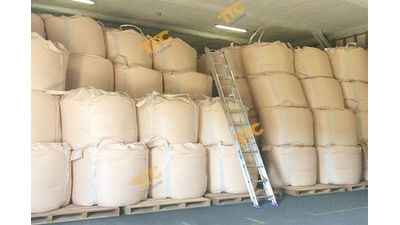1. Standards for exporting packaging for businesses
Nowadays, packaging is not only a container, storage, and support for transporting goods, but it also takes on marketing and advertising tasks, especially in the case of export.
So, for export packaging, what standards should businesses pay attention to?
- First, the required characteristics of export packaging must be met.
- The second is to meet the legal requirements for export.
- Third, ensure packaging quality is suitable for export.
- Fourth, understand clearly the procedures for exporting packaging.
- Finally, choose a reputable export packaging supplier.
Specifically, we will discuss each standard in detail in the following content.

There are many standards for export packaging.
2. Requirements on characteristics of export packaging
Requirements for export packaging need to meet the following characteristics:
- Ensure compatibility with the type of transportation such as ship, plane, or container truck,... Because each form will require different packaging characteristics.
- Ensure the size is suitable for moving and storing in warehouses or moving vehicles (containers) because exported goods stay for a long time.
- Meets standards for the ability to withstand collision, push, move, load, and unload goods in terms of durability and toughness.
- Made from materials that are adaptable to the constantly changing weather and climate in different countries and continents.
- High product protection ability, does not cause the goods inside to deteriorate or become moldy or damaged.
- Warning information to note during the transportation of goods such as loading, loading, etc. on the packaging in detail and in many different languages (including languages in the importing country).
3. Legal requirements when exporting packaging need to be noted
Legal requirements when exporting packaging are mandatory according to the laws of the host country and the importing country. These requirements are specified generally or separately for each type of product, industry, or export region.
For example, depending on each country exporting packaging, whether it is a common market block such as EU, ASEAN, or NAFTA,... or each country such as the US, Japan, or China,... there are different legal regulations.
These regulations include materials, images, colors of the packaging, design, weight, and even labels (symbols and language shown on the outside of the packaging). Therefore, depending on each export market, businesses need to regularly research and update legal regulations to avoid incidents and product recalls.
For special industries such as food, pharmaceuticals, chemicals, etc., regulations on ingredients, origin, usage, warnings, etc. need to be shown in detail on the packaging. For these industries, businesses need to ensure that goods meet import and export standards and certifications.
Export packaging also needs to ensure regulations on sustainability and environmental friendliness, related to factors such as recyclability, self-decomposition, energy saving, waste limitation...
4. Quality requirements of export packaging
Export packaging needs to meet the following performance requirements:
- To see the product inside, the packaging needs to withstand impacts from the external environment such as compression, bending, collision, and dragging, to ensure the packaging is not torn or opened, causing drops or loss of goods. goods during transportation.
- Packaging should be waterproof, moisture-proof, mold-proof, anti-corrosion, vapor barrier, and anti-oxidation to avoid goods deteriorating, or losing odor or color.
- Good heat-resistant packaging, limiting deformation, shrinking, or expanding when exposed to changes in temperature, affecting the quality of the product.
- The packaging blocks the effects of light and sunlight to prevent color fading and affecting the product's properties.
- The packaging is not harmful to health and does not affect the goods inside.
- Prioritize export packaging that is easy to open - close, easy to move, easy to preserve, and can be recycled many times, optimizing the user experience.
5. Procedures when exporting packaging
When exporting packaging, businesses need to prepare a set of export customs documents including the following specific documents:
- Commercial Invoice (Commercial Invoice)
- Packing List (Packing List)
- Bill of Lading (Carrier Bill of Lading)
Documents and documents required by the importing partner should include:
- Certificate of Origin (C/O)
- Certificate of Quality (C/Q)
And a few other related documents may be added depending on the industry.
6. Green Packaging - a reputable export packaging manufacturer

Green Packaging - a reputable export packaging manufacturer.
Green Packaging is a reputable export packaging manufacturer, meeting standards of quality, safety, convenience, and optimization of packaging fees for businesses.
With 22 years of experience in the field of packaging manufacturing and applying advanced technology imported from Starlinger Europe, we specialize in manufacturing & providing packaging solutions with products such as PP Woven bags and jumbo bags. , PP coated, OPP lamination, PE cage, edge welding (automatic packaging), Multi-Layer Bags...
Green Packaging applies ISO 9001-2015 quality management standards and the HACCP food safety management system, meeting the majority of requirements of food industries such as Sugar, MSG, Wheat Flour, Tapioca, and Rice. …
With a production capacity of 1,000 tons/month and, a factory area of 54,000m2, Green Packaging is pleased to be a reliable partner when businesses need to find an export packaging production unit.












